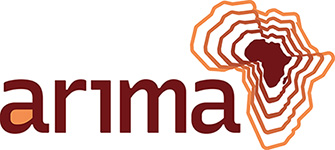 |
Atsu Alagah Komlavi ; Kadri Chaibou ; Harouna Naroua - Étude comparative d'algorithmes d'apprentissage artificiel pour la reconnaissance faciale
arima:9291 - Revue Africaine de Recherche en Informatique et Mathématiques Appliquées, 7 mars 2024, Volume 40 - 2024 - https://doi.org/10.46298/arima.9291- 1 Université Abdou Moumouni [Niamey]
- 2 Abdou Moumouni University of Niamey = Université Abdou Moumouni de Niamey [UAM]
Background: The fundamental need for authentication and identification of humans using their physiological, behavioral or biological characteristics, continues to be applied extensively to secure localities, property, financial transactions, etc. Biometric systems based on face characteristics, continue to attract the attention of researchers, major public and private services. In the literature, many methods have been deployed by different authors. The best performance must be found in order to be able to recommend the most effective method. So, the main objective of thisarticle is to make a comparative study of different existing techniques.Methods: A biometric system is generally composed of four stages: acquisition of facial images, preprocessing, extraction of characteristics and finally classification. In this work, the focus is on machine learning algorithms for classification. These algorithms are: Support Vector Machines (SVM), Artificial Neural Networks (ANN), K-Nearest Neighbors (KNN), Random Forests (RF), Logistic Regression (LR), Naive Bayesian Classification (NB: Naive Bayes’ Classifiers) and deep learning techniques such as Convolutional Neural Networks (CNN). The comparison criterion is the average performance, calculated using three performance measures: recognition rate, confusion matrix, and the Area Under Receiver Operating Characteristic (ROC) curve.Results: Based on this criterion, the performance comparison of selected machine learning algorithms, shows that CNN is the best, with an average performance of 100.00% On ORL face database. However, on the YALE database, classical algorithms such as artificial neural networks have obtained the best performances, the highest being a rate of 100%.Discussion: Deep learning techniques are very efficient in image classification as proven by the results on the ORL database. However, their inefficiency on YALE face database is due to the small size of this database which is inappropriate for some deep learning algorithms. But this weakness can be corrected by image augmentation techniques. The comparison of these results with existing state-of-the-art methods is nearly the same. Authors achieved performances of 94.82%, 95.79%, 96.15%, 96.44%, 97.27%, 98.52% and 98.95% for NB, KNN, RF, LR, ANN, SVM and CNN classifiers, respectively. Finally, in depth discussion, it is concluded that between all these approaches which are useful in face recognition, the CNN is the best classification algorithm.